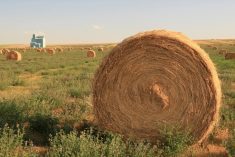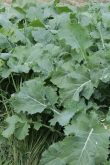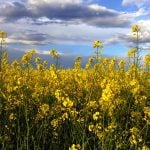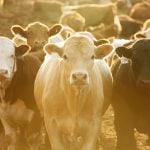Deciding when to cut hay often comes down to a gut feeling.
“And lots of times, that can get you into trouble,” said Ryan Sommerfeld of RPS Gelbvieh, based near Medstead, Sask.
Sommerfeld outlined his simple methods for cutting and baling hay at a regional agricultural update in Turtleford, Sask., in early March. Sommerfeld avoids the agony of watching cut hay turn black through a set of practices he uses on his family’s operation.
It starts with the seeding blend. Sommerfeld adds a quarter pound of timothy and three pounds of brome to the mix to create a hay stand that will dry faster.
Read Also
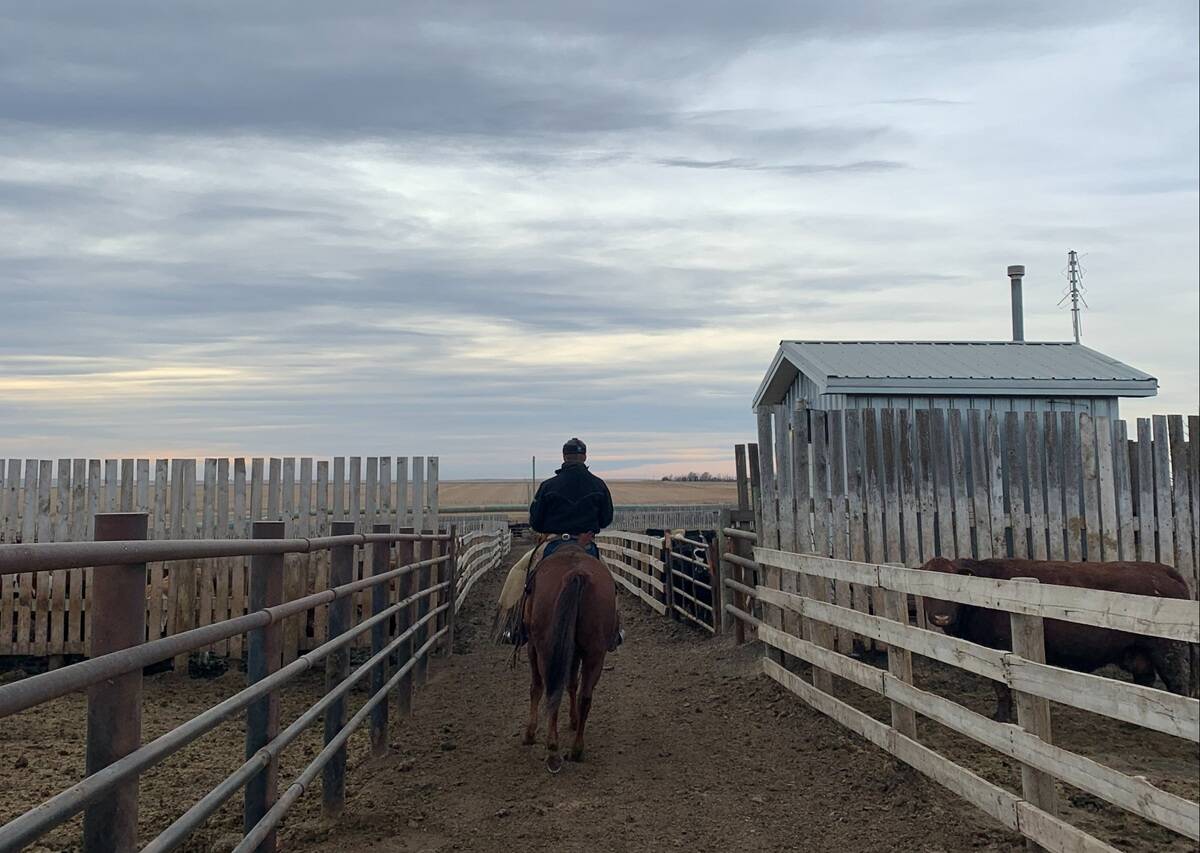
Pen riders still better than tech at detecting respiratory disease in feedlot cattle, says researcher
Recent research found that pen riders are better than tech at flagging signs of BRD in feedlot cattle
Sommerfeld looks to at least two five-day weather forecasts and a systems map when deciding whether to cut. The weather systems map, which includes pressure systems and jet stream trends, has proven the most useful for him in the last few years. He finds precipitation predictions in regular forecasts “very unreliable” in comparison, he said.
If Sommerfeld sees high pressure and a favourable jet stream five days out, he cuts hay on day one. Usually the high pressure system is coming from the south, he said.
“And that brings in your southern, drier air. And if the jet stream is holding off any low pressures from the northwest, then you can usually go cut hay,” said Sommerfeld in an interview. In Sommerfeld’s area, it takes at least five days from cutting to baling, he added, so if the forecast is favourable on day five, it’s safe to cut.
“And if it’s low jet stream, low pressure, you’re pretty well sure that you’re going to get some showers through that stretch, or at least have some cloud cover.” In those cases, he added, “you’d better focus on trying to get what you have baled up.”
Sommerfeld also watches the jet stream’s trend. For example, when cutting greenfeed, he needs eight to 10 days. He wants the jet stream way up, with a huge high pressure system coming behind it to keep it up, he explained. If the jet stream looks okay on day four and five, but is trending down, he doesn’t cut the greenfeed.
Sometimes the forecast is mixed between days one and five. Whether he cuts hay depends how short he is on time. Last year Sommerfeld cut his first bit of hay in mid-June, and kept cutting small amounts, based on the jet stream and pressure systems.
“If day four and five were good, even if I was going to get a little shower in between, I’d still go cut a little bit that I thought I could get on day five, and I’d just keep working like that.”
Usually hay is only on the ground for five or six days using this system, he said.
Sommerfeld started using the jet stream and pressure system forecasts to decide when to cut hay about 20 years ago. At that time, The Weather Network included that information in its forecasts, but then dropped it. About five years ago, Sommerfeld found the systems maps on The Weather Network’s website, and started using them again.
“I just trusted it more and more every year,” he said.
Unfortunately The Weather Network recently dropped the jet stream and pressure system map, leaving Sommerfeld searching for an alternative.
Producers can find pressure system forecasts at the SpotWx website. Select a location, choose GDPS (GEM-GLB), which is a 10-day forecast, and scroll down until you find the wind and pressure table. Note this site doesn’t include jet stream information.
Another possible replacement is meteocentre.com. Navigate to Forecast>CMC-GDPS, then click on the panels link in the “classic” row. Producers can also find jet stream forecasts at netweather.tv.
Next month Sommerfeld discusses more tips on raking and baling hay. Producers can also connect with Sommerfeld on Twitter at @RPSGelbvieh.







